Great Bear Rainforest - Day Four
Posted on 31st October, 2023
Based on the weather the previous evening, I woke hoping for some atmospheric conditions. I was not disappointed and emerged on deck to find plenty of low cloud and fog clinging to the forested hills surrounding the inlet. I dare say everyone else was hoping for another warm and sunny day - but I was delighted!
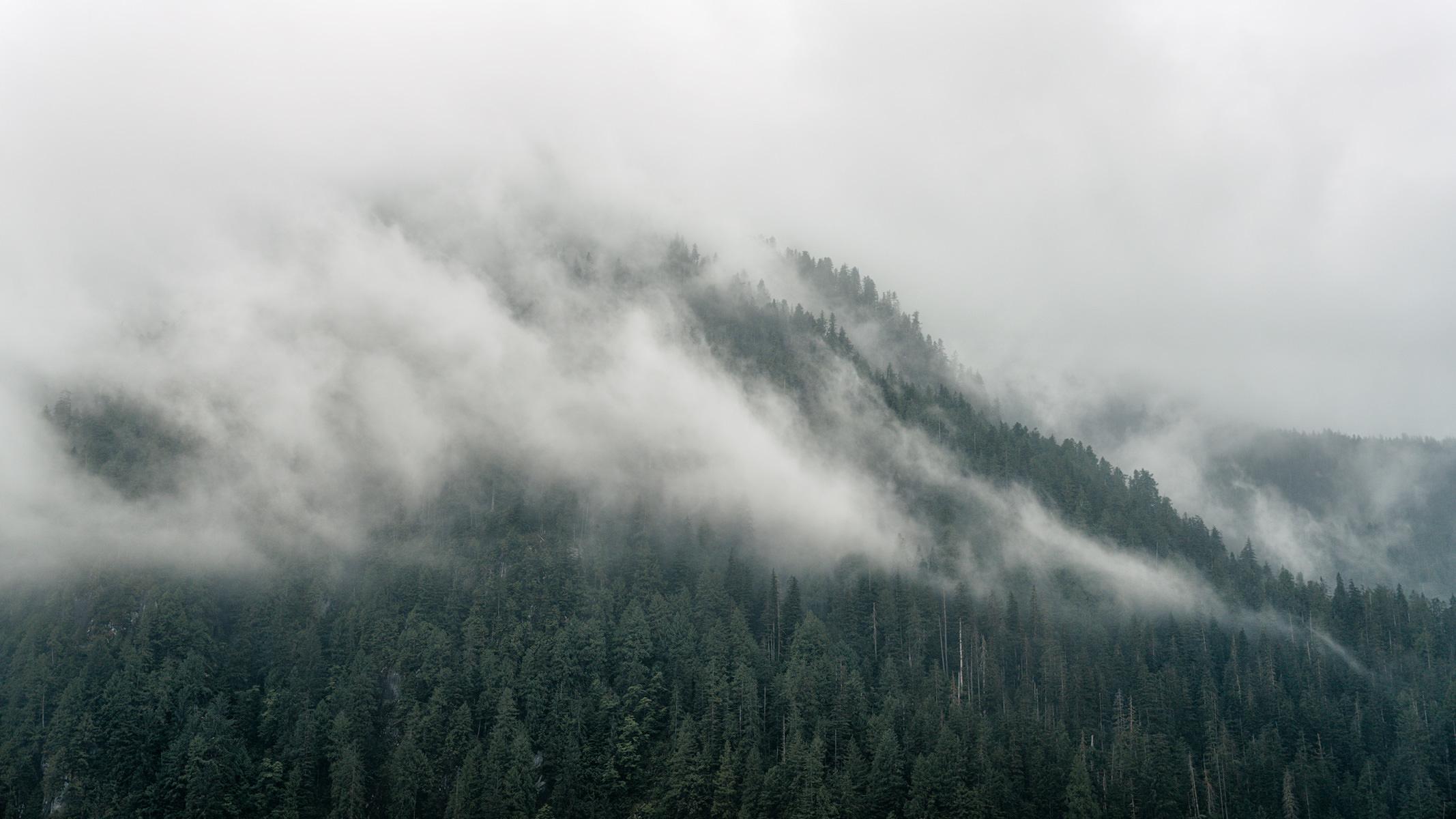
It was still pretty dark but I didn't want to miss out, not knowing how long the conditions might last. We were soon back in the zodiacs, although the tide was still quite low, so it took a bit of time until we could access the river itself.
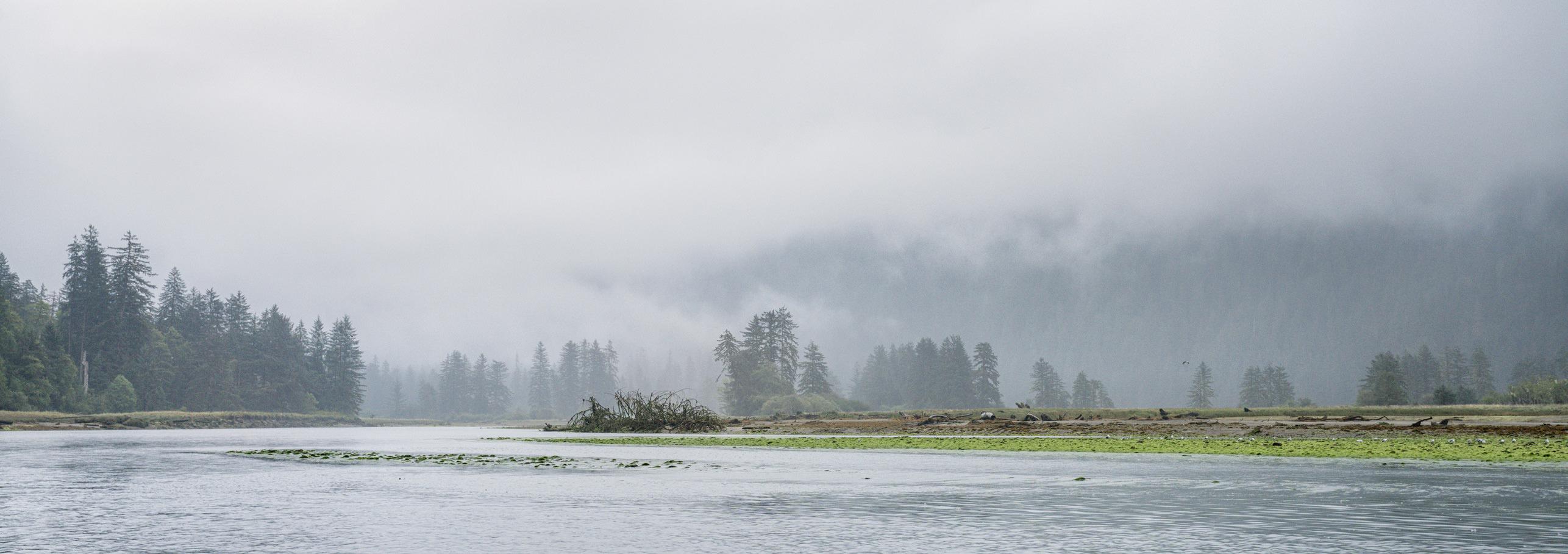
Aside from the wonderful scenery, there were plenty of bald eagles fishing for salmon to keep us entertained. Also, a large flock of playful (or perhaps aggressive?!) Bonaparte gulls.

They are rather charming looking little birds and I particuarly enjoyed watching them dive bombing each other. There were photographic opportunities in every direction and it was just a case of trying to spot them before the moment had passed - I almost missed the crows perched on a shapely bit of scruff, but caught them as one or two of them started to fly off. I loved the skeletal form of all the fallen trees here and they were very much a feature of the area.
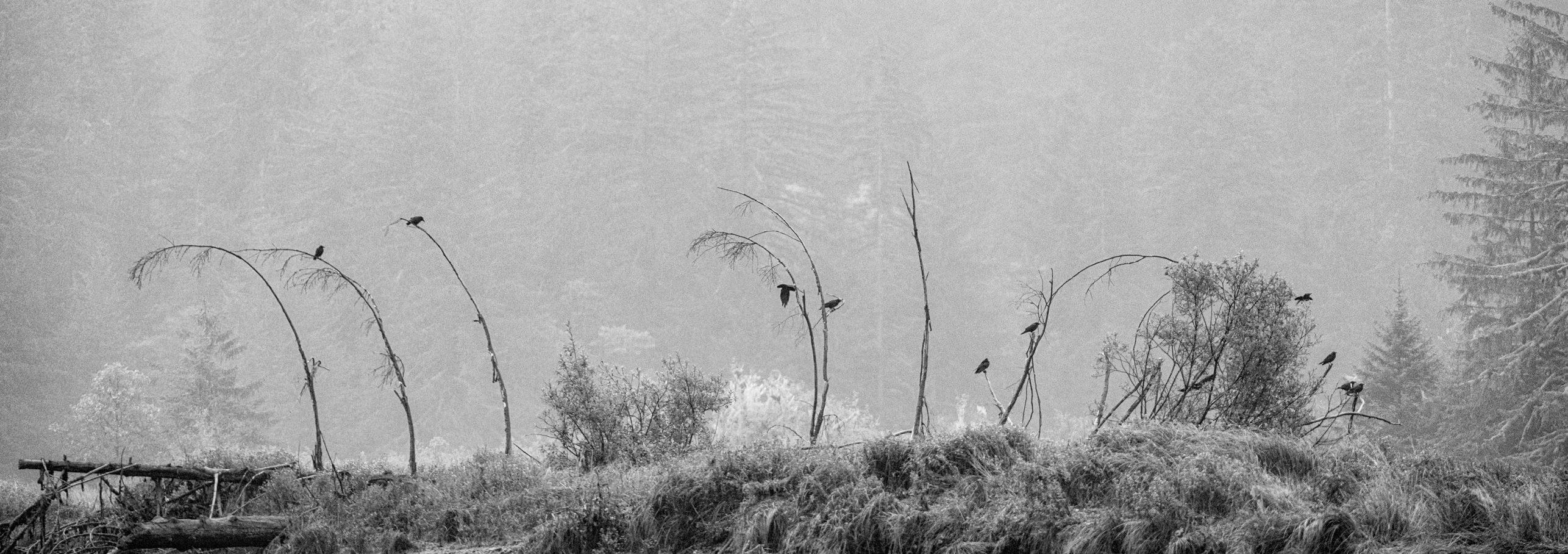
As it got lighter, the details in the surrounding landscape became more defined, constantly changing and absolutely mesmerising with the fog clinging to the hillsides, every now and then revealing the depths of the ravines within. There was also plenty of birdlife to enjoy, as was pretty much always the case. We were often accompanied by Belted kingfishers, though they were never close (or still) enough for me to attempt to photograph them seriously!
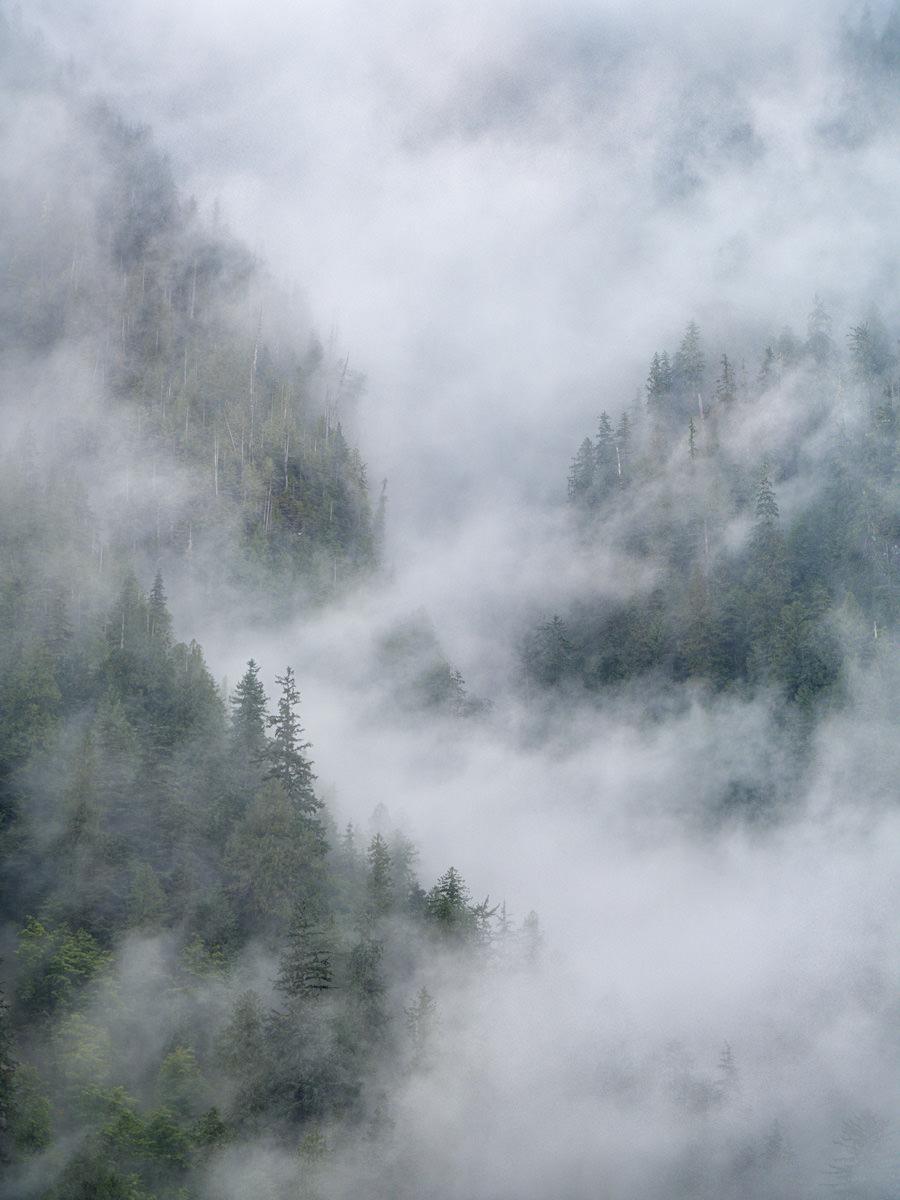
These were classic rain forest conditions - incredibly atmospheric and I was quite glad the tide prevented us from moving too far so that I could just take it all in. I could happily have sat there all day and didn't really notice that it was a tad chilly and damp. In fact I now can't remember whether or not we were bothered by the black flies that morning - perhaps it was too damp and cold for them, or perhaps I have just remembered all the best bits!
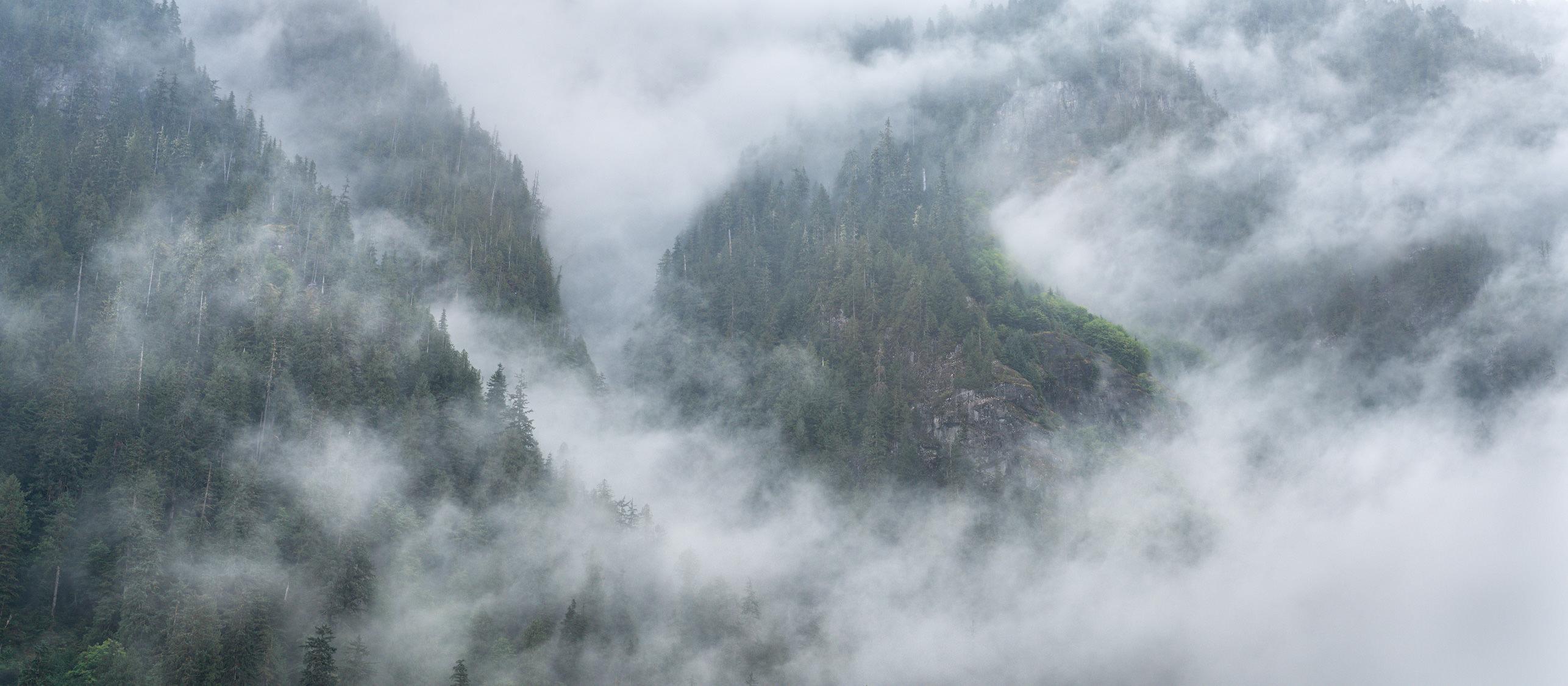
Eventually the water was high enough for us to navigate the stream and we soon spotted a massive, male grizzly bear in the distance - he was beautifully situated on the edge of the river, complete with rising fog - but it was too far away for me to get a meaningful photograph. Not to worry, we were soon reunited with our mother and her two cubs and spent nearly half an hour watching them - as she kept an eye on the two youngsters, playing, catching salmon and having a good explore of the riverbank.

It should be evident just how relaxed these bears were and my photos don't begin to do the experience justice - but I'm fine with that - they serve to remind me of a magical time watching wild animals in their natural environment - which is far more important than the photos in themselves. We returned, very happy, for another fantastic breakfast and it was now time to leave Khutze Inlet.
Our surroundings just seemed to get more and more beautiful, as the fog rose a little, revealing layer after layer of wonderful shapes, colours and textures. Photographing straight ahead on the boat was not a straight forward exercise, thanks to the bow railings, so I had to put on a life jacket and stand as far forward as I dared, operating my camera one handed and somewhere above my head!

It was raining quite hard by this time but that certainly didn't deter me and, all things considered, it didn't come out too badly. Even better I managed not to drop anything into the sea! Having a zoom lens that goes out to 20mm was also a big advantage here - a stitched pano might have been challenging!
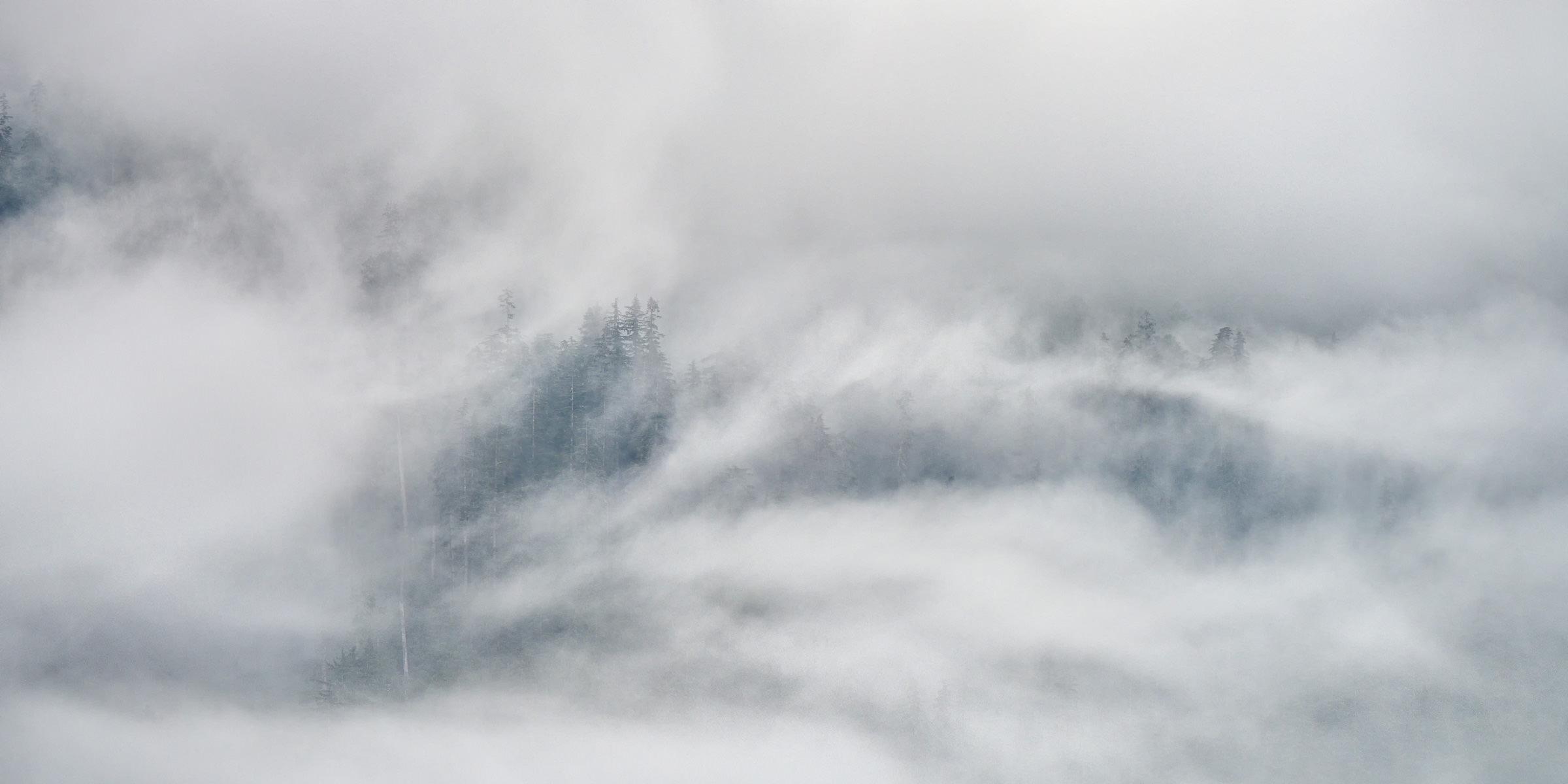
The next hour or so was pure magic. As we made our southwest and then west towards Princess Royal Channel, the mist and clouds took on a life of their own, continuously metamorphosing, and making for the most glorious landscape photography conditions. It was hard to know which way to look! It's also been quite a task trying to choose a few images to share - in many cases, they are probably not the ones I'd envisaged at first glance.
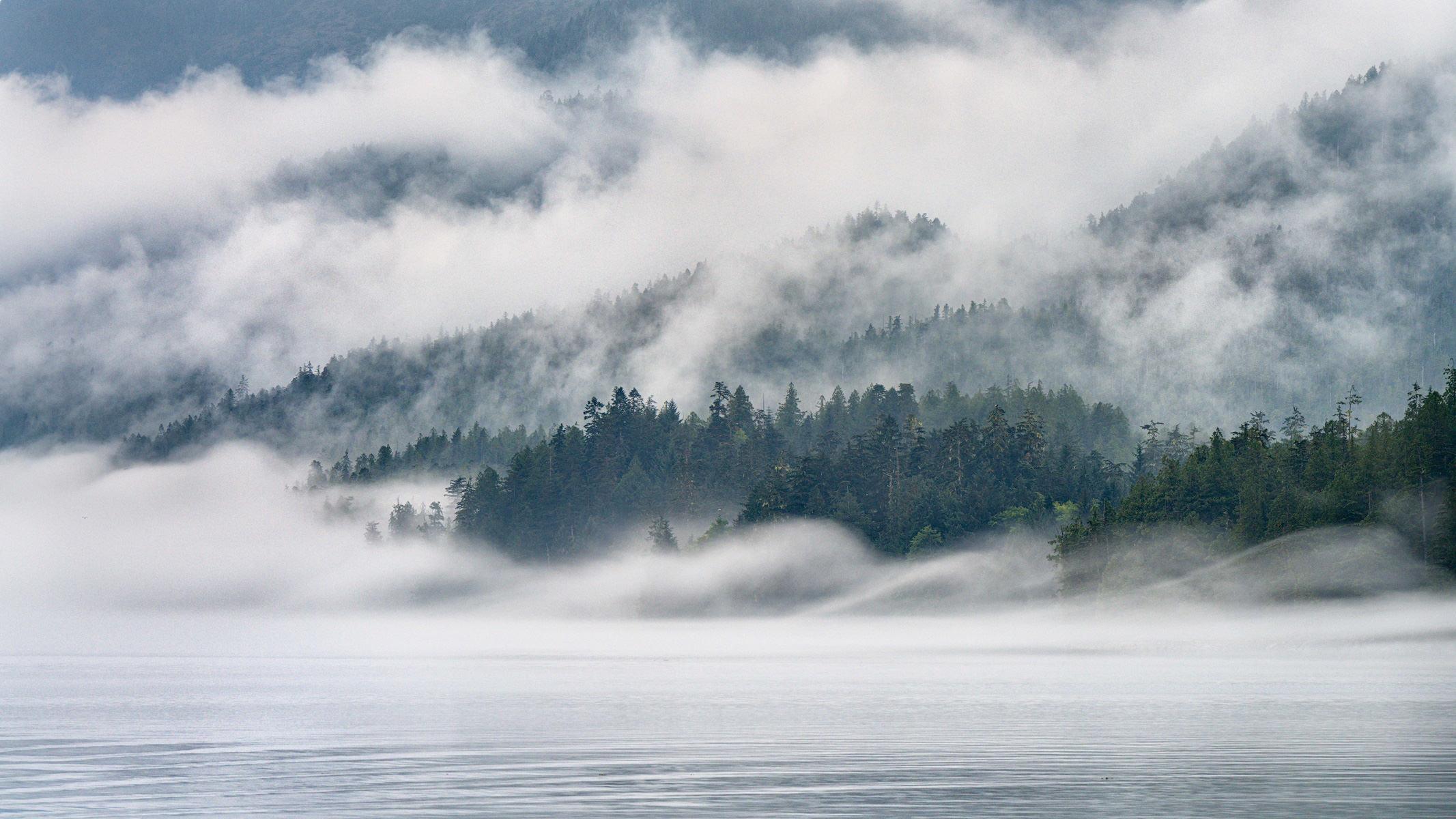
For the most part I used my 70-200mm lens which allowed me to zoom in to some of the amazing and abstracted details, but with plenty of room to go a bit wider - often required, such is the vastness of this wilderness. Occasionally I reached for my other camera with the 20-70mm lens in order to show context and to capture some of the surreal reflections refracted by our wake.
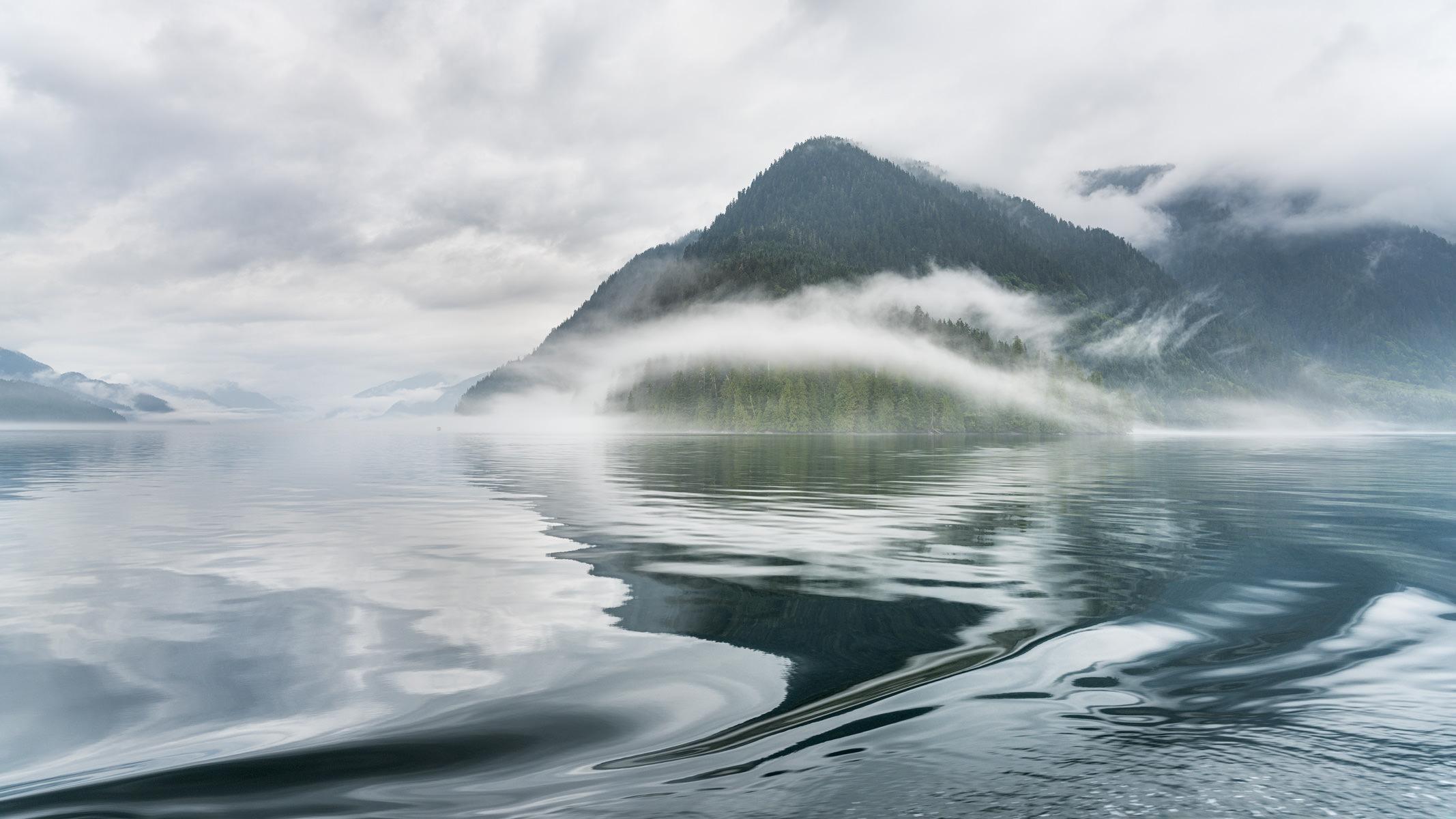
I knew that working out how to process these would be tricky and this has definitely been the case - trying to maintain that feeling of lightness, without losing detail is always a delicate balance and initially, I went from being too light handed to attacking them with a metaphorical sledge hammer! I may well yet fiddle some more, but for now these feel about right - bearing in mind there is no true 'right'.
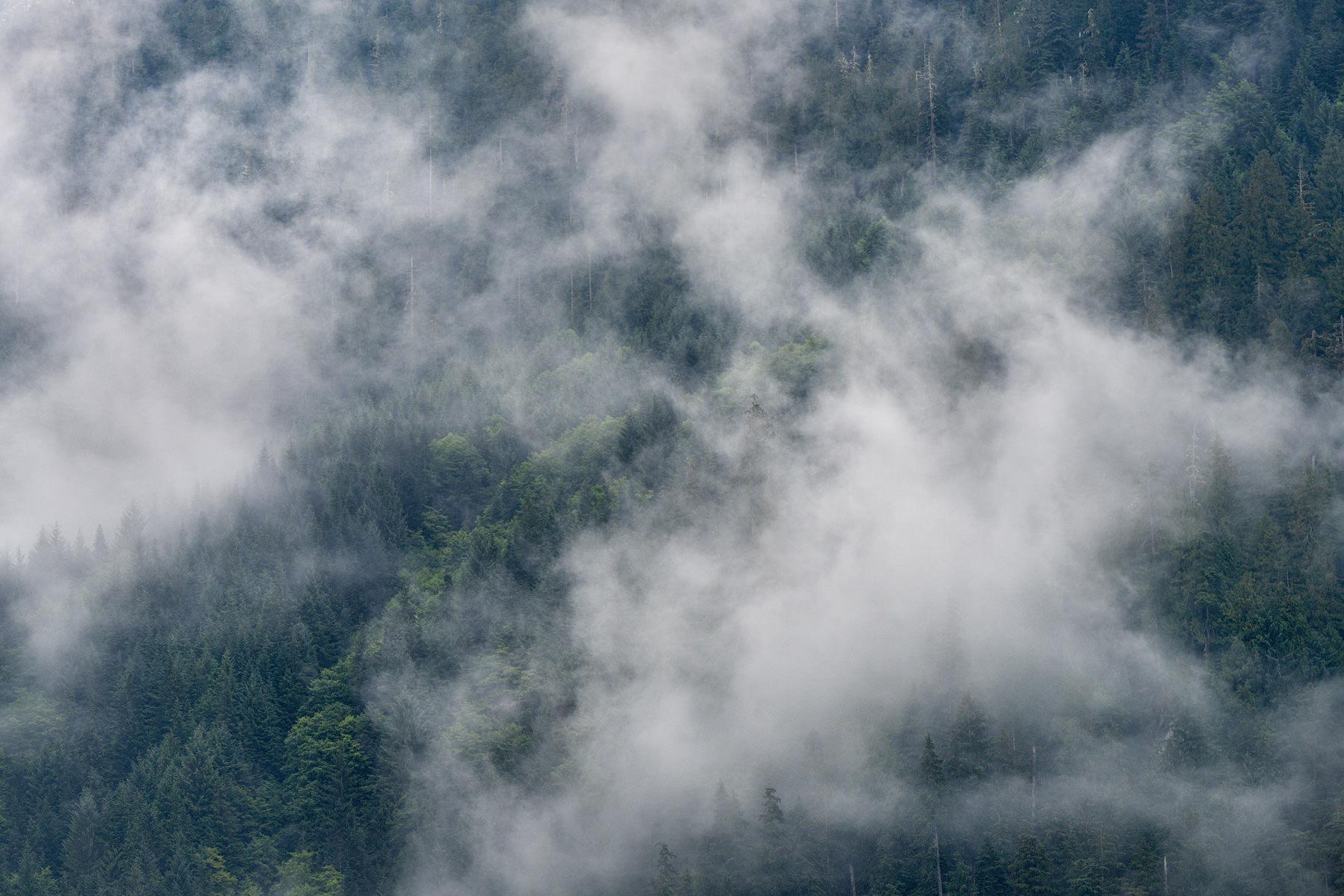
The other challenge I faced was not being able to take advantage of my camera's various aspect ratio settings. Normally I like to compose as precisely as I can and use the various crop options accordingly. There is no time to think, let alone fiddle with aspect ratios, when you and the scenery are constantly moving - so I kept the camera at its native 3:2 and hoped I would remember what I had in my head when it came to processing.
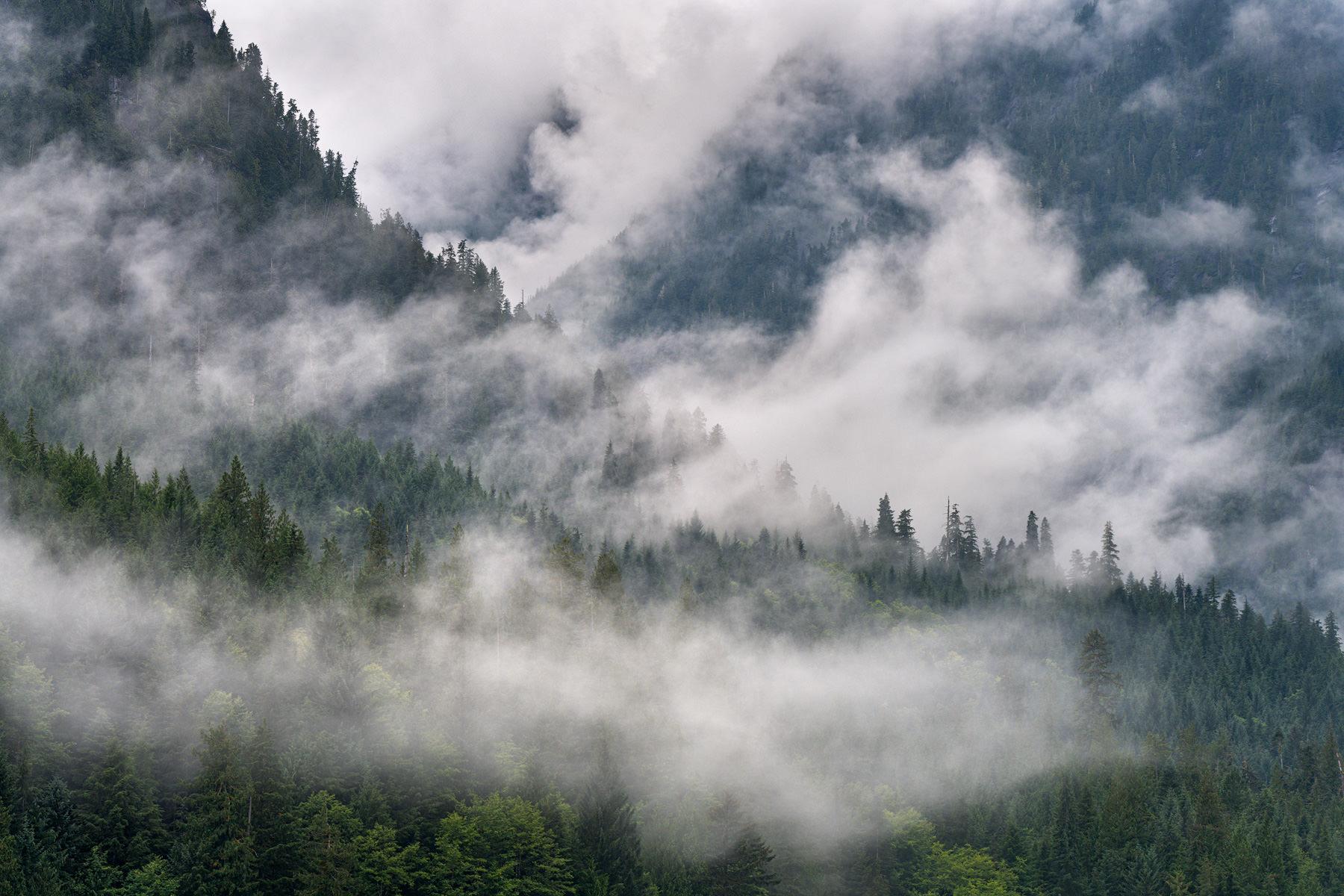
I guess if the end result works, then I shouldn't get too hung up about my original intent - but it can be hard to force yourself away from your usual working habits. In most of these images the trees (and the occasional bird) provide some sense of scale but there is defintiely a certain kind of ambiguity with many of them.
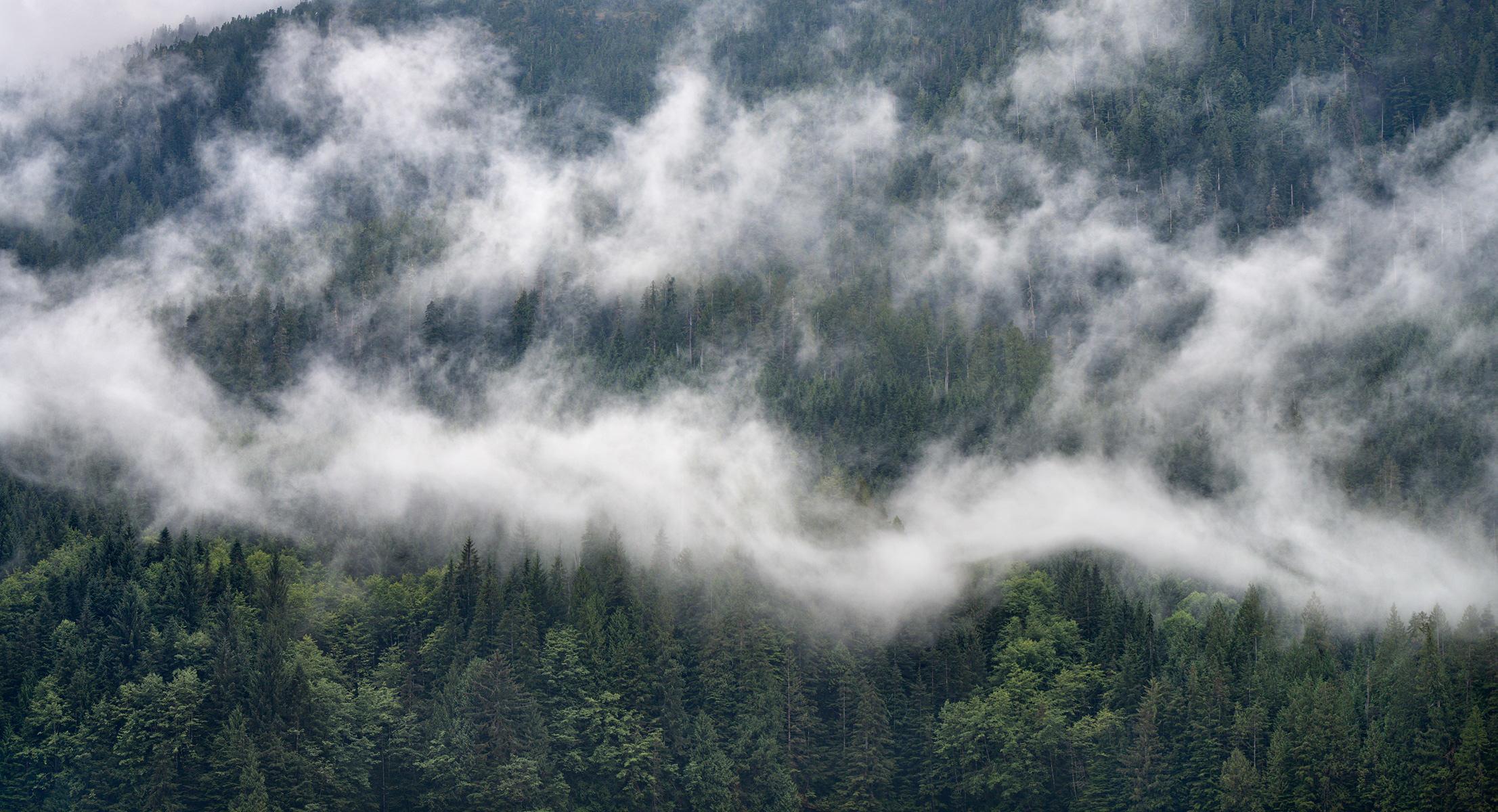
This one (above) feels to me as if it was taken from on high and I was surprised to find it was at the wide end of my 70-200mm zoom. All good things come to an end and eventually the mist dissipated and the light became a little flat, but not before I had fired off well over 100 images in an hours or so - which for me, is a lot!
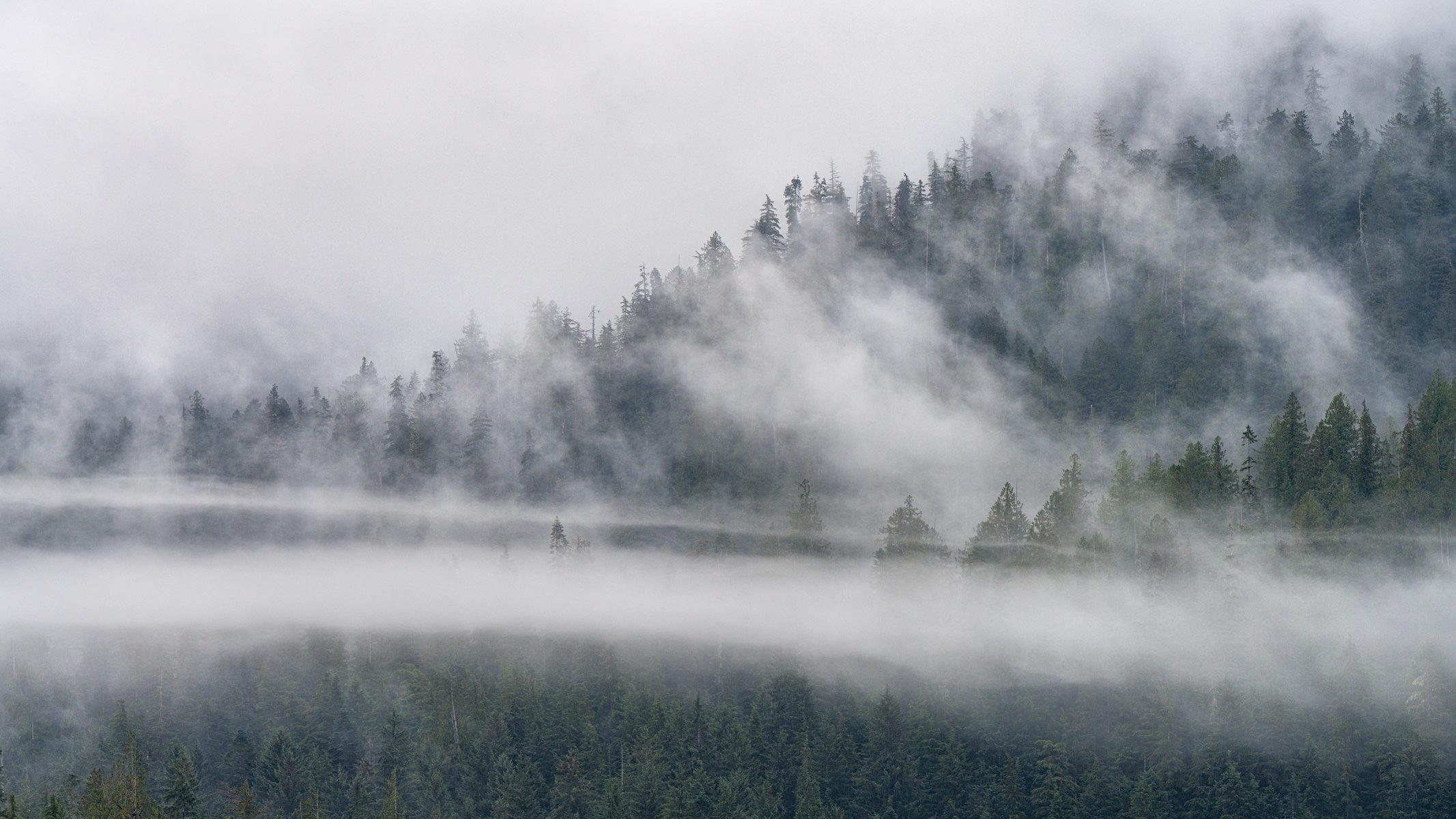
That particular show may have been over, but we were now back in whale territory and it was not long before we saw humpbacks again, including one bubble feeding by itself - you could quite clealry sea the bubbles form in a circle - incredible! However I have better whale photos in the coming days so have not included any of these ones in this day's write-up.
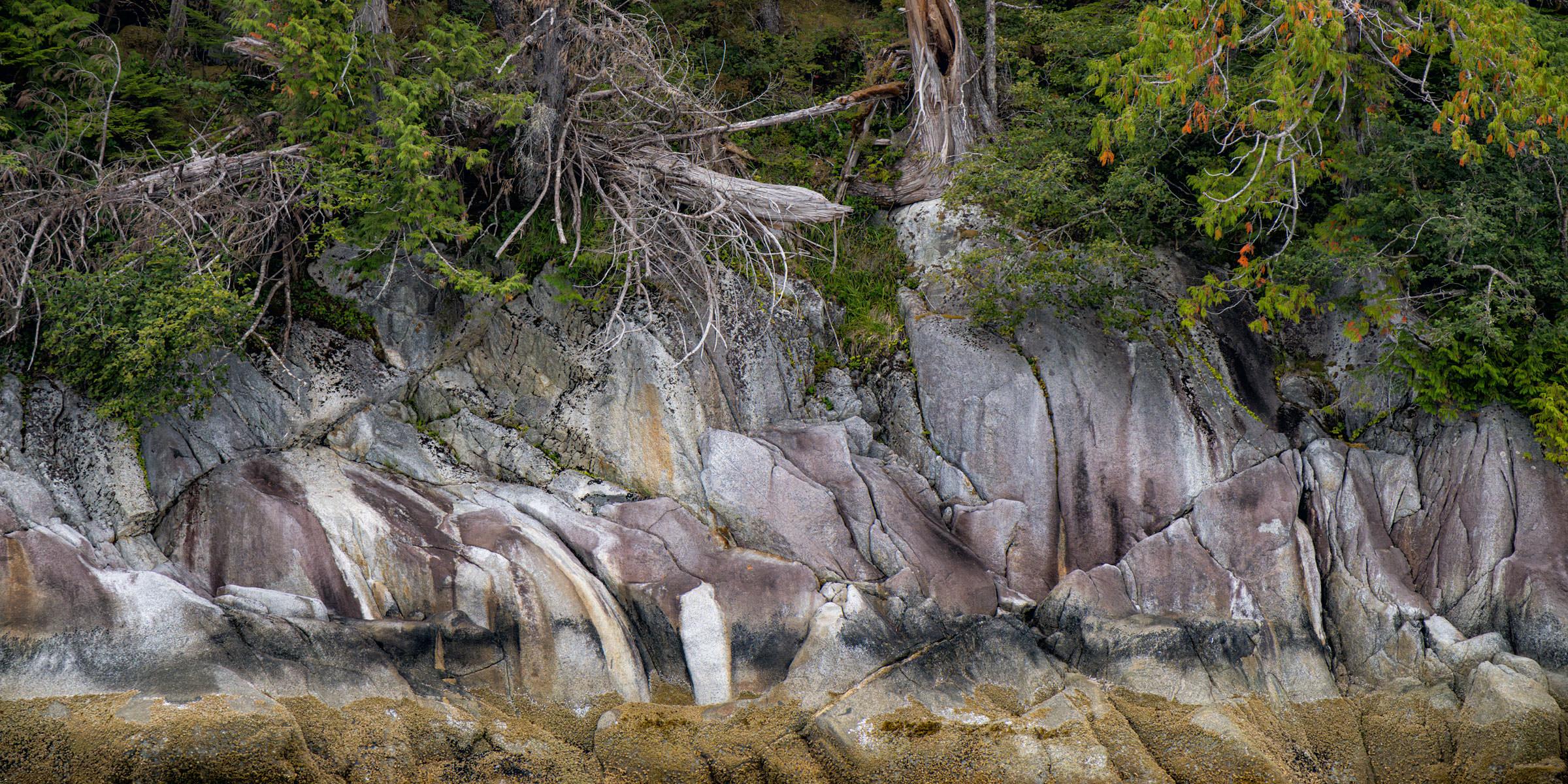
I was again struck by the extraordinary patterns and colours of the rocky shoreline - they really constitute works of art in themselves, almost as if painted. I also noticed that the tail patterns of the whales often seemed to match the rock.
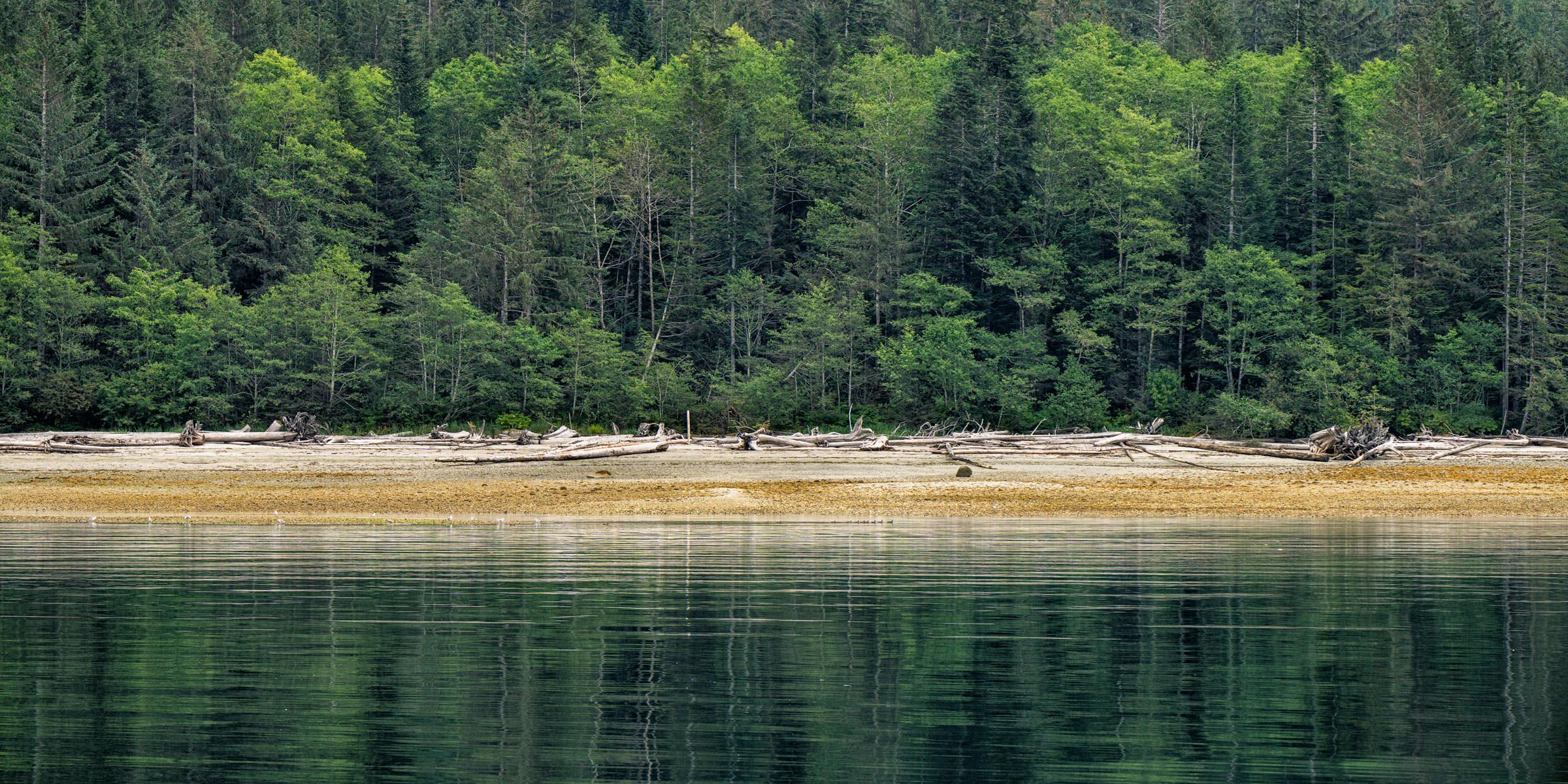
Having not set foot on dry land since we got on the boat over 3 days earlier, it was very exciting to learn we were going to go onshore a while, visiting a little bay on Pricess Royal Island. The beach was covered in massive driftwood logs - a sad sign of the logging that has gone on over the years, but of course very appealing from a photographic perspective.
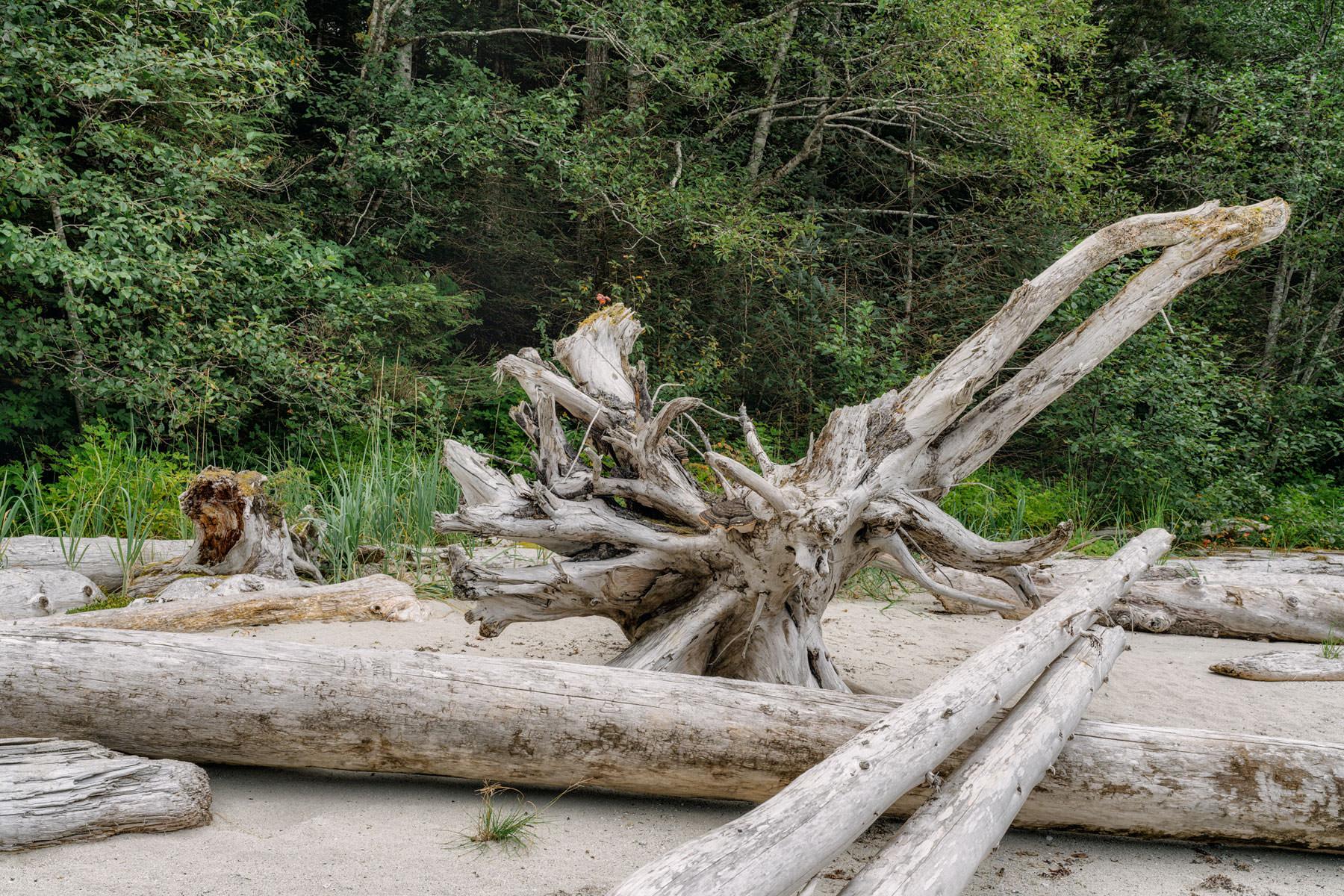
The intertidal details at our feet were also wonderfully rich and vibrant, with Liron (our naturalist for the trip) giving us a great resumé about what we were looking at and how all the different elements fit into the ecosystem. I rather wished I'd brought my posarising filter with me but, even without, the details and colours underwater are clear to see.
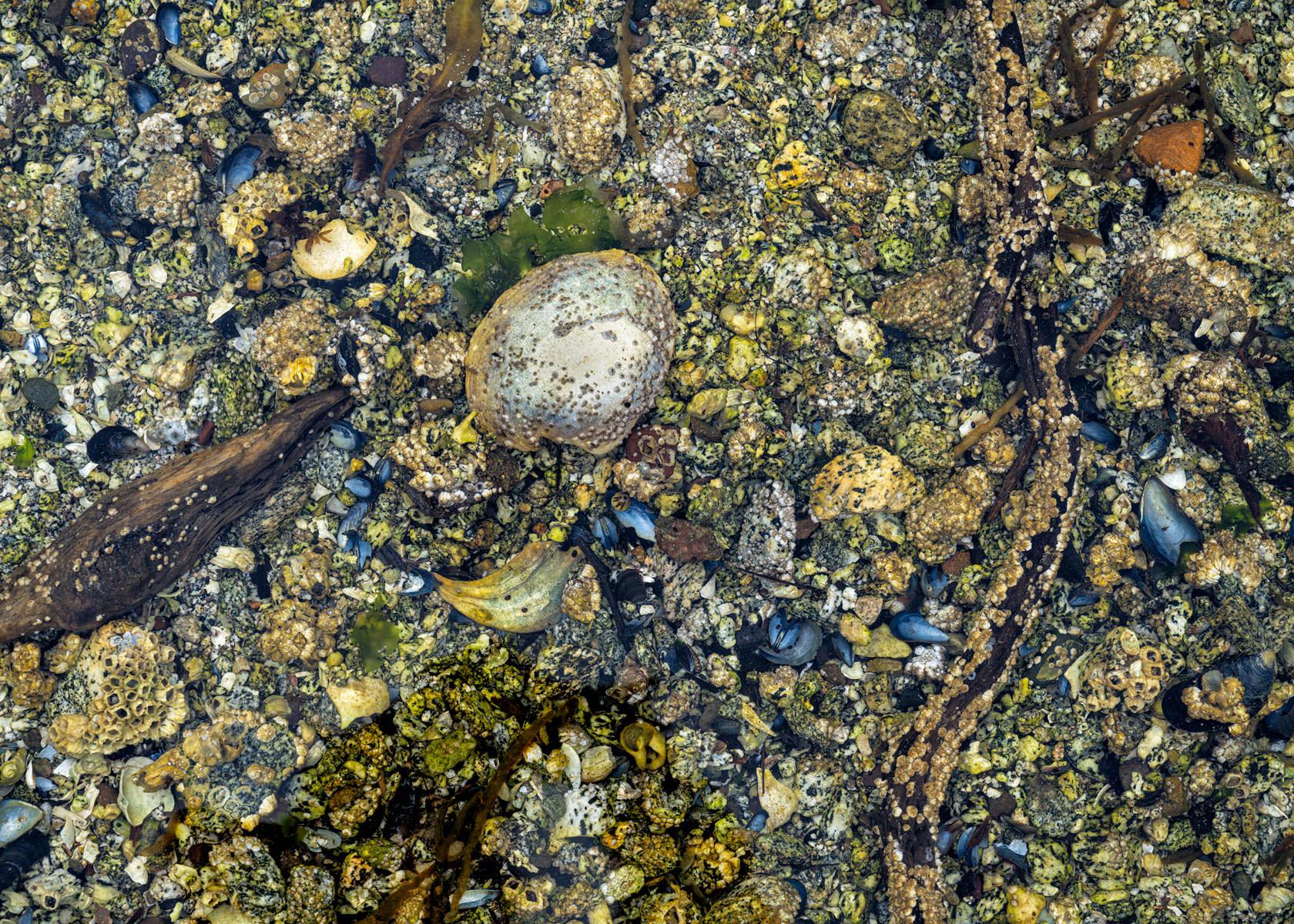
There were huge numbers of very sweet and tiny sandpipers on the beach - a combination of Western and Least - I'm not sure which of the two these are, but they are incredibly well camouflaged and I completely failed to spot this group initially.

As ever, I could have stayed there for hours but we had places to go, so returned to the boat and headed for our next anchorage. We'd had such a full day, that we ended up eating supper on the move again and I have to thank Jeanette for pointing out the lovely play of light behind me.
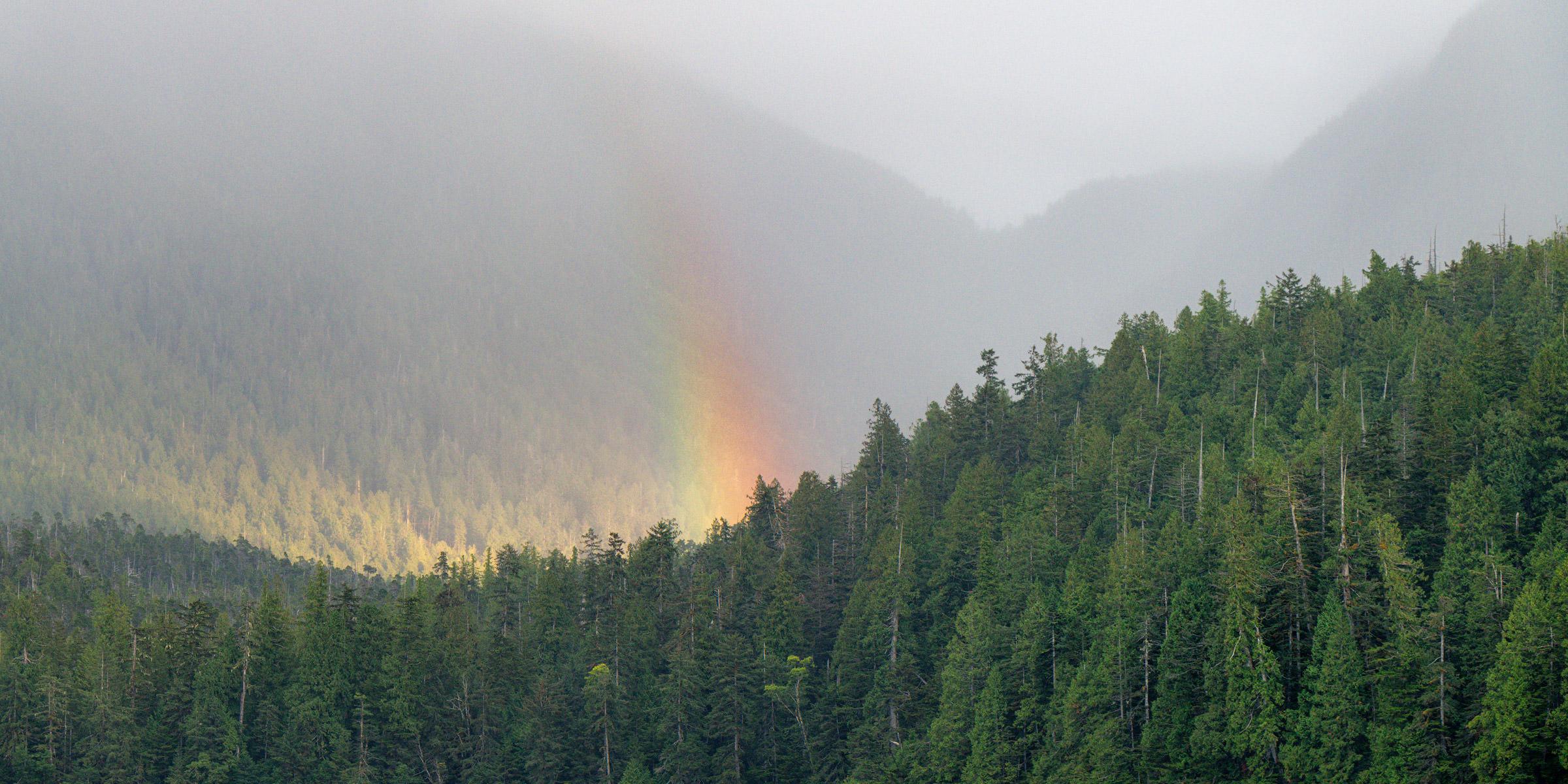
As darkness approached, we found ourselves surrounded by yet more whales - quite fitting, as we were travelling through Whale Channel! Liron reckoned there were over 30 humpback whales around and, for the second time that day, we saw fin whales. These are the second biggest mammals in the world and, though it's hard to get a true appreciation of their size, as they rarely breach, the fact that their dorsal fin can be anywhere up to 2 feet high, should give a good idea of just how massive they are.
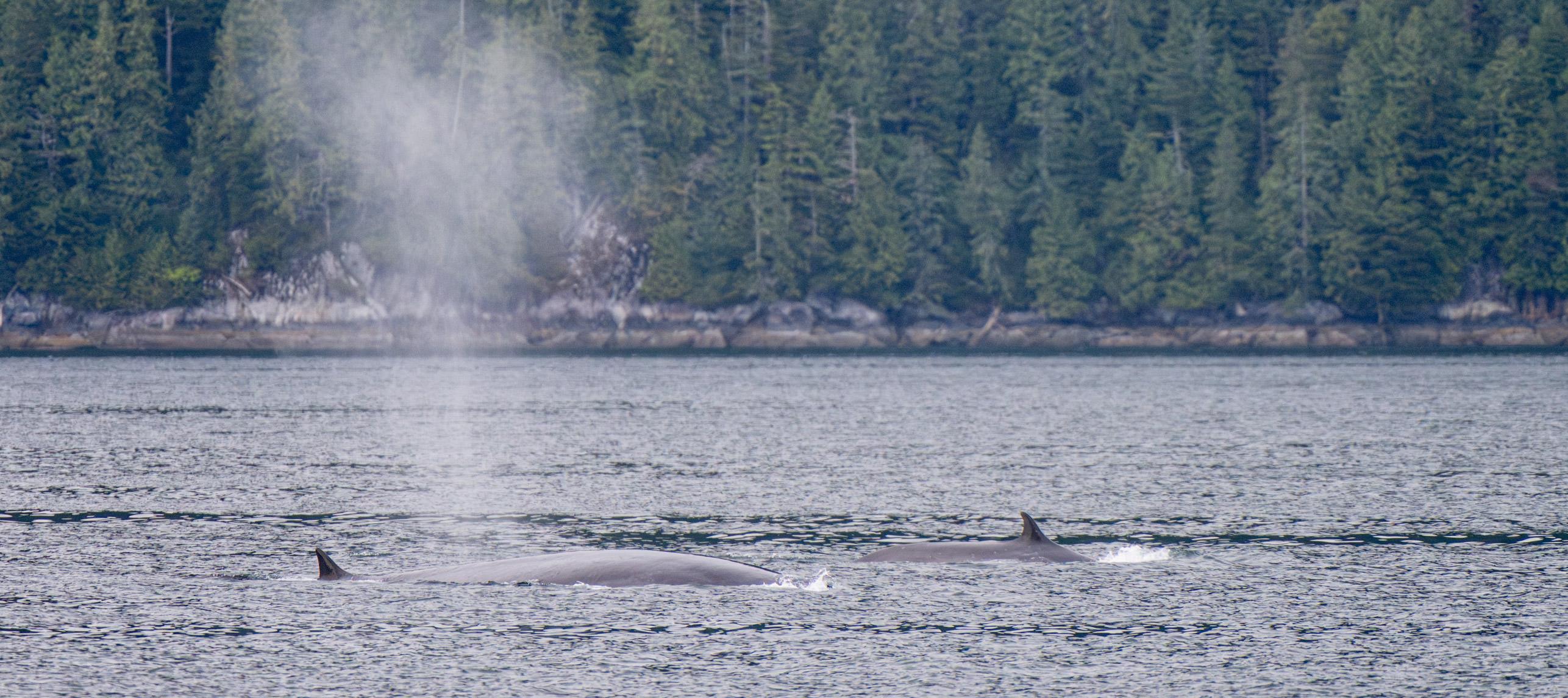
As often, this is a fairly big crop of the image, shot at my maximum 280mm and, such was the light, at ISO 2500 - it seemed worth including, as I think it does give some sense of their size - typically from 65-80 feet long!
We arrived at our destination - Cameron Cove - in near darkness. The views would have to wait for tomorrow and we were also told there was a chance of hearing, if not seeing wolves. Just another uneventful day in Paradise then - or something like that ;)
It may seem a little unintuitive, but please click on the PREV link/button below for day 5!
